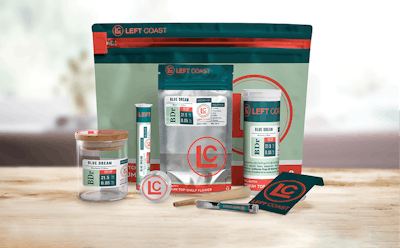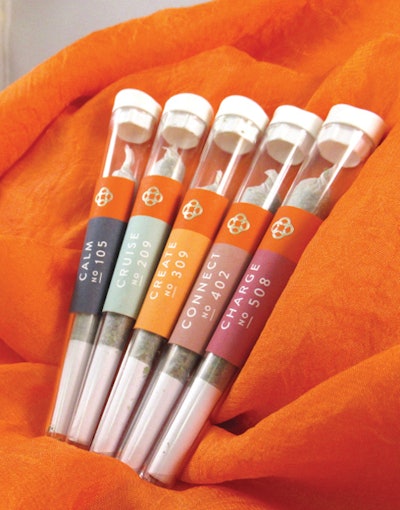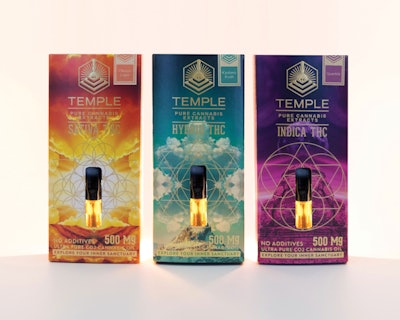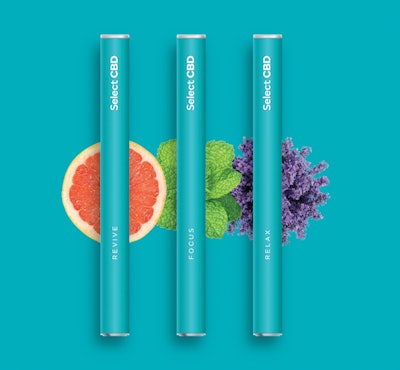
If you’re like many young cannabis companies today, you’re likely facing the challenge of brand building. Understanding what a brand is and how you can use it to create a highly recognized and widely popular business can help give you a giant leg up on your competition.
The term “brand” originated as a mark burned on livestock to identify the owner. In modern business, the term has evolved to include not only a company’s products, but its values, promises and personality. A brand is the lens through which the public views the company. In fact, the term brand is now so widespread that it has become interchangeable with terms like company and business.
Building a strong brand from scratch is never an easy task, especially in the cannabis industry. Not only are you facing a myriad of rules and regulations on everything from packaging to advertising, you also have the added challenge of creating a brand in an industry that has been notoriously bad at branding.
Many consumers who’ve never interacted with the cannabis industry perceive it as misogynistic, criminal and full of the stereotypical stoners with red eyes and the munchies toking on bongs. In fact, I was just talking with a friend who wants to micro-dose for her anxiety, and her husband whispered to me, “I don’t want my wife to become a pothead.”
While cannabis entrepreneurs have made significant steps toward more sophisticated and welcoming marketing and branding, the industry needs more brands that will elevate and legitimize the medical and recreational markets. To appeal to more consumers, we must move from the illicit and stoner perceptions to those of respected, legitimate businesses with products used by people from all walks of life. The fastest way to make this happen is through branding.
Brand building requires more than just a logo, icon, color palette and tagline. A brand is an ongoing experience that your customers have with your company. Consumers demand a tangible, relatable and value-driven experience with companies. How your business meets that demand is a key factor in building your brand. To be successful at this feat requires a great deal more work than most companies realize.
It requires a dedication of the leadership and the staff to ensure the brand is consistent and aligned across all touch-points customers have with your company. This includes:
- Packaging
- Social Media Channels
- Advertising
- Public Relations/Publicity
- Sales
- Marketing
- Customer Service
- Thought Leadership
If you have visions of creating a brand that stands out on the shelves, has a loyal following with state or even national recognition, these steps are critical to your success:

Optics: Logo, Color Palette and Style Guide
The first encounter with your brand is via packaging or promotion. Your logo gives you a recognizable mark that instantly identifies your company.
When creating your logo:
Do:
1. Keep it clean and simple.
2. Use images and colors that reflect the brand values and personality.
3. Be unique.
Don't use:
4. The color green.
5. Images of joints, pot leaves or other obvious cannabis-related objects for a logo.
6. Exaggerated fonts, colors and images.
Your color palette sets the tone and feeling that you want identified with your brand, and your style guide ensures the cohesion and consistency that makes your brand look and feel legit.
Your logo will likely contain one to three colors. You may choose to add a few more colors (six to seven in total) that are closely related to the logo colors. These make up your color palette. Use only these colors in your packaging, marketing and advertising.
Your style guide ensures the cohesion and consistency that makes your brand look and feel legit.
A brand style guide is the primary visual DNA of your company’s branding, though it can also reference grammar, tone, word usage and point of view. Essentially, it’s a document that describes, defines and presents examples of what your brand looks like in various visual media such as print, Internet and broadcast.
When it comes to your style guide:

Do:
7. Use the same fonts and colors in all your sales, marketing and packaging, website, etc.
8. Make it policy that any materials produced by the company must follow the style guide.
9. To ensure consistency, give your style guide to any outside agencies with which you work.
Packaging
The right packaging can make or break your business, as this is often the first point of engagement with a customer. There are also many legal regulations to consider when designing your packages.
When designing your packaging:
Do:
10. Follow traditional branding guidelines for font, font size and color.
11. Study the packaging of brands you like in other industries.
12. Be consistent across all products.
Don't:
13. Waste that valuable space on confusing or inconsistent visuals.
14. Forget to check and double-check your local and state packaging laws before you go to print. (A misprint, omission or false claim on your packaging could mean thousands of dollars in printing gone to waste, or worse.)
15. Copy the competition. Just because it works for them doesn’t mean it will work the same for you, and your packaging will not be distinct and recognizable.
Communication
How you communicate with the public is as important to building your brand as your visual elements are. Visuals are how you look; communication is how you convey the brand personality. It’s how the public will get to know you.
Share your company values, create products, services and experiences that your customers want/need and produce content (blog posts, photos, sales brochures, etc.) that clearly communicates who you are and what you offer.
Creating a brand that is on-point with the above is more likely to inspire customer loyalty and the elusive word-of-mouth marketing so valuable to a company’s growth.
When conveying your brand messaging:
Do:
16. Communicate the values and mission of your company.
17. Listen to your customers’ needs and wants, and deliver on their requests.
18. Create experiences for your customers that are memorable and positive.
Don't:
19. Talk only about yourself and push sales too hard.
20. Produce products and services that your audience doesn’t need or want. (This may seem obvious, but it isn’t uncommon for businesses to fail because they were out of touch with their customers’ needs.)
21. Create negative experiences for customers. This happens most often in customer service. Not returning calls, making returns and refunds difficult, and talking down to customers are all ways to turn someone against your brand. Nothing hurts a brand more than unhappy customers.

Hire Professionals
Every day, more professionals are making the leap from the traditional business world to cannabis. They know what it takes to develop a powerful brand experience. They can help you cut out unnecessary steps and bring their knowledge of current trends and customer psychology to the table.
When seeking outside help:
Do:
22. Hire professionals with traditional business experience.
23. Trust them to guide you and teach you about what it takes to develop the kind of brand you want to be.
24. Take an active role in developing the brand with them.
Don't:
25. Hire professionals with no cannabis knowledge. This can create problems. (See packaging section above.)
26. Second-guess the advice you get or cut corners. This doesn’t mean to blindly follow everything your contractor says, but trust that you hired the right person and let her do her job.
27. Turn over brand development to someone and walk away. You know your company values and mission better than anyone, and you need to be a part of determining its brand.

Today, you have a rare opportunity as a young company to grab significant market share with a brand that speaks to cannabis customers and provides meaningful experiences for them; but it’s getting crowded fast. Investing in a standout logo, and awareness campaigns and actions, can help you accelerate your brand out in front of the competition.
If you don’t have the budget to hire a professional or a team of contractors, take classes and educate yourself before attempting to develop your brand. Building a successful and well-loved brand is not impossible, and it doesn’t require gobs of money for advertising. But without great visuals and a consistent customer experience, your brand will be treading water. Give it your all, share your heart out and create great experiences. The public, and your customers, will reward you for it.


















